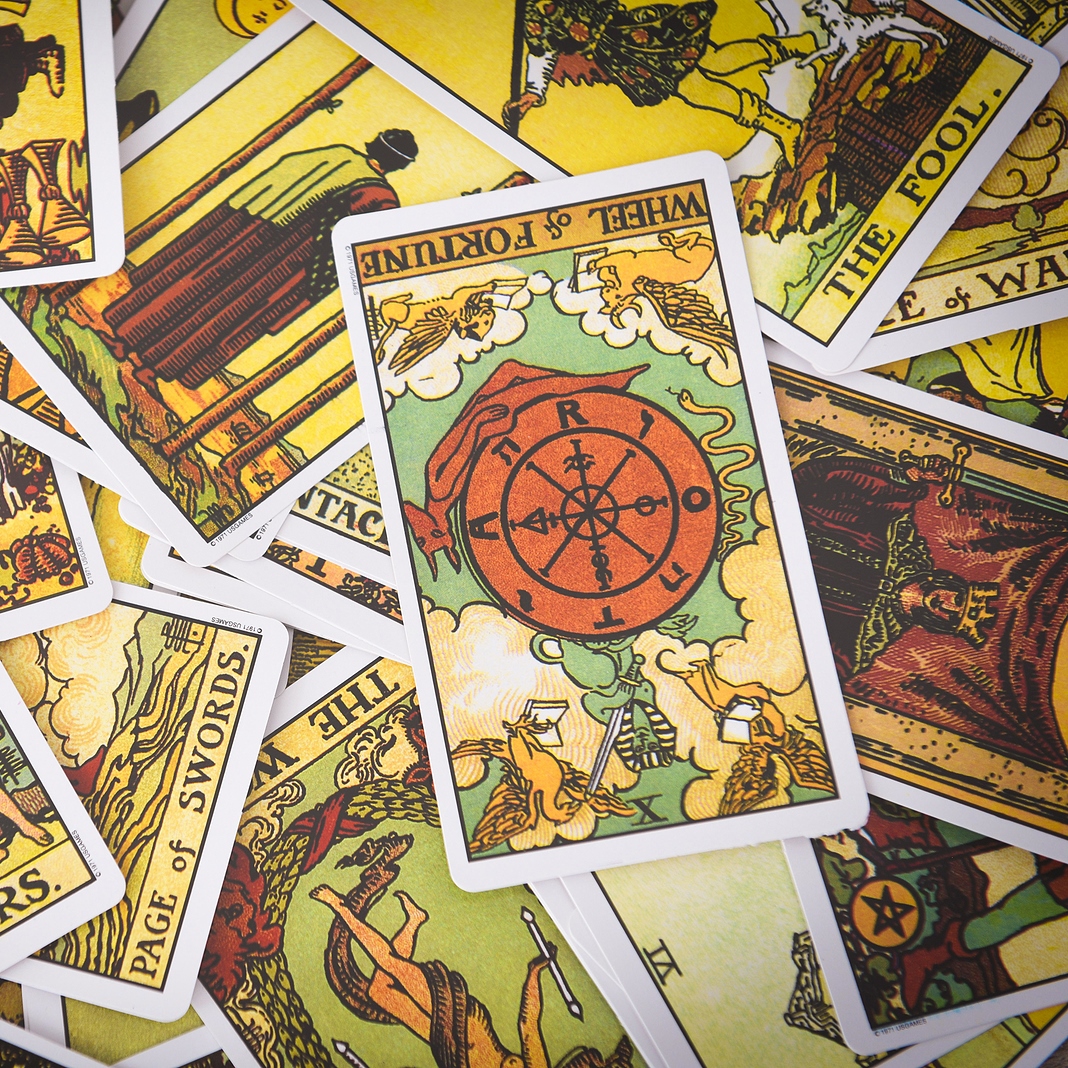
Fine art and tarot cards are not an obvious pairing on the face of it. One projects images of museums, galleries, and elegant brush strokes whilst the other conjures up images of mysticism, divination, and ancient symbols. But on closer examination, these seemingly unrelated worlds intersect: symbolism, creativity, and interpretation picture them separately as individual circles on a Venn diagram. In the flowing weave between fine art and tarot, it is fascinating to see how each world influences and expands the other.
Historical Parallels: The Progress of Art and Tarot
A little research turns up an amazing parallel in the development of both fine art and tarot. Both have grown over many centuries, across a variety of cultural boundaries and artistic currents. Fine art, with a broad spectrum of styles ranging from classical to contemporary, mirrors the creativity of humanity over time. Similarly, tarot cards have undergone their own changes: from simple playing cards in 15th-century Europe to divination tools that help people understand the times in which we live, an increasingly sophisticated form of self-examination and spiritual discovery.
In Renaissance days, fine art enjoyed a golden age marked by profound realism, perspective, and feeling. Artists like Leonardo da Vinci and Michelangelo carved their visions in marble or immortalized them on canvas. Thus, they encapsulated humanity’s identity in a new form that surpassed anything previously witnessed by mankind. At the same time, tarot cards—then in their infancy—appeared as allegorical emblems of life’s many-layered complexity. Among the archetypal themes that they embodied were love, death, and rebirth, thus becoming linked to our view of existence itself. Tarot’s symbolism drew upon a number of familiar sources including ancient mythology, Christian iconography, and medieval allegory. It echoed, in turn, part of the hodgepodge van influences that animated also Renaissance art.
Inspired by changes in the art world, which included movements from Baroque grandeur to Impressionist innovation, tarot decks also continued to change. Whether from things like aesthetics or social attitudes, these alterations profoundly impacted tarot images. The 20th century marked a revival for whole art. There were avant-garde operas that we today call performance art and manga, the counterpart to our present-day graphic novel. The dreamlike imagery was translated into their works by visionary artists such as Salvador Dalí and Frida Kahlo, whose paintings echo both tarot’s ambiguous narratives and enigmatic pictures.
A Shared Language of Symbols and Allegory
At its heart, both fine art and tarot are based on symbolism and allegory. Artists employ symbols as a means of communicating meanings that go beyond their surface sense so as to invite the viewer into their thorough understanding. Similarly, each tarot card is a detailed representation of some aspect of subconscious understanding or vision. The Mona Lisa is likewise an image that invites meditation and self-creation, alphabet and interpretation. In art, symbols serve as visual metaphors that transcend language to convey universal truths and emotions. For example, the rose often symbolizes love or beauty, while the skull represents death and the transient nature of life. Cards of similar number, all carry their own narratives so that each card can be visualized as an entire experience in itself. The Fool, an innocent traveler who embarks on an adventure, stands for new possibilities and a personal pursuit. The Tower is depicted by falling to pieces under the strikes of lightning, indicating disarray and dramatic change.
Fine art and tarot interact beyond symbolic meaning – they have rich common ground in spirituality, psychology, and existential thought. Each speaks to human depths, facing up to the ultimate existential dilemma and delving into life’s mysteries. From Renaissance masterpieces to tarot readings from websites like Tarotoo, both appeal to individuals seeking meaning and insight, thirsty in their own time for self-awareness and enlightenment.
Potential for Expression: Artistic Portraits
Of all the intersections between fine art and tarot, the one that grabs you the most is its potential for artistic interpretation. Each tarot card offers a blank canvas for the artist to make their mark. From the time-honored to the current, tarot decks are a potpourri of different artists’ styles and cultural backgrounds. In like fashion, fine artists take inspiration from tarot symbolism, working leitmotifs into their own larger works.
Current interest in tarot has lately spawned an arts revival, as people in various fields seek to reinterpret it visually and thematically. Profoundly beautiful and deeply moving tarot decks have been created by illustrators, painters, and graphics artists: decks that preserve the dignity of tradition while breathing new life into it. Styles in this respect vary from whimsy and imagination to seriousness and reflection, mirroring the kaleidoscopic range of human experiences.
Conversely, the symbolism of the tarot has found its way into contemporary art galleries and exhibitions, with themes of identity, power, and spirituality, all ripe for artists’ exploration. This is tarot imagery seen through a different eye. Whether they use traditional forms or digital platforms, the fusion of fine art and tarot continues to inspire innovation and foster creativity in the artistic community.
Conclusion
In conclusion, the bond between fine art and tarot is testimony to the enduring creativity within people. As times change, symbols stay similar, and humans continue expressing themselves. Artists and tarot practitioners of all times and areas have taken in each other’s ideas; in the process, each party was able to develop toward new plateaus. The connection between art and divination is not only timeless in terms of its content but also becomes a refuge for one and all. Whether in the brush washes of a masterpiece or on the shuffle of tarot cards, people always find solace, inspiration, and meaning. In today’s world, we live in a time of converging contradictions. May we draw wisdom from both these paired realms as we traverse the mysteries.
